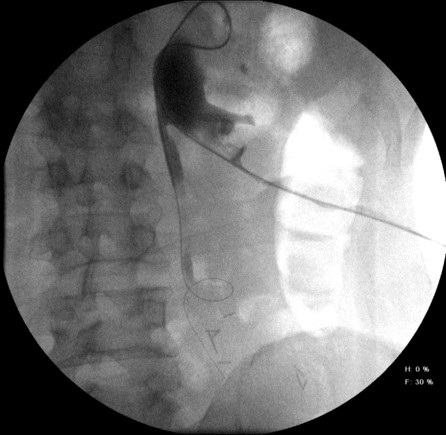
Journal of Clinical Images and Medical Case Reports
ISSN 2766-7820
Case Report - Open Access, Volume 2
Giant retroperitoneal liposarcoma: Surgical management of a difficult case with acute abdomen
Scopelliti M*; Pelizzo P; Romano M; Dott Carraro P; Zanus G
General Surgery, Unit 2, Regional Hospital of Treviso, Italy (DISCOG, University of Padua).
*Corresponding Author: Michele Scopelliti
4th Surgery Unit, Regional Hospital Treviso, DISCOG,
University of Padua, 31100 Padua, Italy.
Email: michele.scopelliti@aulss2.veneto.it
Received : Oct 23, 2021
Accepted : Jan 10, 2022
Published : Jan 17, 2022
Archived : www.jcimcr.org
Copyright : © Scopelliti M (2022).
Citation: Scopelliti M, Pelizzo P, Romano M, Dott Carraro P, Zanus G. Giant retroperitoneal liposarcoma: Surgical management of a difficult case with acute abdomen. J Clin Images Med Case Rep. 2022; 3(1): 1570.
Introduction
Retroperitoneal sarcomas are a relatively rare disease that represent a challenge for the surgeon especially when the mass reaches remarkable size and causes anatomical subversion. Liposarcoma is one of the most common histological subtypes. It often grows asymptomatic till considerable dimensions. From literature we know that the only possibility of radical treatment is the complete surgical resection. Although that approach improves the prognosis, local recurrence is the main cause of mortality. Actually, liposarcomas have no support of complementary radio-chemotherapies. This report describes the clinical presentation and surgical management of a patient with a symptomatic huge retroperitoneal sarcoma.
Introduction
A 42 year old man was admitted to Surgical Department, because of abdominal pain associated with palpable mass (Figure 1). His previous medical history was uneventful, and he didn’t take any medicines. He referred a slowly progressive increase in abdominal pain irradiated on the left-side and to low back with an increasing of abdominal volume in the last weeks. No stool or gas for 7 previous. On admission the man (170 cm; 80 Kg). Objectively he presented a tense abdomen, a big palpable mass and a stretched metallic peristalsis. Chest X-ray and laboratory values were unremarkable unless for high C-reactive protein. Computed tomography scan displayed a huge mass (23 X 17 X 12 cm) that had its origin from retroperitoneum (Figure 2B). Heteroplastic mass compressed the left iliac vessels and displaced the left ureter causing ipsilateral hydroureteronephrosis (Figure 2A, 2C); there was also an important occlusive aspect. First approach, in order to characterize the mass, was conservative.
For clinical worsening, the patient underwent emergency surgical approach (ASA 3) (Figure 3).
Discussion
Retroperitoneal sarcomas are a relatively rare heterogeneous diseases that commonly occur in patients with 40-60 years old without a predominant gender distribution.
Liposarcoma is the most common variants among the retroperitoneal sarcomas and is classified by WHO in 4 major subtypes: Well differentiated, dedifferentiated, myxoid and pleomorphic [1].
Retroperitoneal liposarcoma may develop without any symptoms until they became voluminous and compress adjacent organs causing abdominal pain, gastrointestinal or urological symptoms.
CT scan remains the most useful diagnostic tool providing information about tumor’s position and size, grade of infiltration and involvement of adjacent structures: it is helpful to prepare surgical strategy [2]. Complete surgical resection is the benchmark for treatment if negative margin should be achieved even if resection of adjacent organs is needed. Macroscopically incomplete resection or tumor rupture are associated with a worse outcome [3]. Local recurrence remains the preliminary cause of mortality in these patients, even after radical resection. Chemotherapy and radiotherapy have not shown any consistent benefit jet: Chemotherapy has an established role in palliative management of advanced sarcomas while adjuvant RT is considered a valuable treatment option in order to improve local control of the disease, especially in patients with involved margins after surgical resection [4]. There are a growing number of molecular target agents in oncology (immunotherapy) and molecular testing are becoming more and more important for treatment strategy of liposarcomas.
Even with complete removal, the prognosis for liposarcoma remains poor because of the frequent relapses [5].
References
- Luo, Peng, et al. Retroperitoneal dedifferentiated liposarcoma: Analysis of 61 cases from a large institution VL - 9; JO - Journal of Cancer.
- Sassa N. Retroperitoneal tumors: Review of diagnosis and management. Int J Urol. 2020; 27: 1058-1070.
- Tanaka K, Tsumura H. Eighth edition of the American Joint Committee on Cancer staging system for soft tissue sarcoma of the trunk and extremity: in search of a better staging system. Ann Transl Med. 2019; 7: S11.
- Callegaro D et al. Development and external validation of two nomograms to predict overall survival and occurrence of distant metastases in adults after surgical resection of localised soft-tissue sarcomas of the extremities: a retrospective analysis. Lancet Oncol. 2016; 17: 671-680.
- Yan Y, Xia S, Teng D, Hu S, Li S, et al. Resection outcomes for primary and local recurrent retroperitoneal liposarcoma patients. Ann Transl Med. 2020; 8: 1450.



